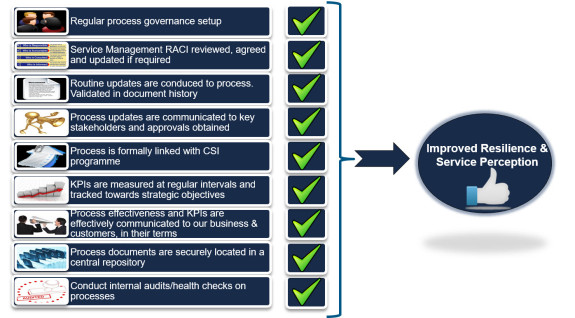IT Service Management (ITSM) – Continual Service Improvement (CSI)Process and Approach
Continual Service Improvement (CSI) Process
To define specific initiatives aimed at improving services and processes, based on the results of service reviews and process evaluations. The resulting initiatives are either internal initiatives pursued by the service provider on his own behalf, or initiatives which require the customer’s cooperation. (from ITIL).
Continual Service Improvement (CSI) Purpose, Goals and Objectives
- Continually align IT services to changing business needs
- Identify and implement improvements throughout the service life cycle
- Determine what to measure, why to measure it and define successful outcomes
- Implement processes with clearly defined goals, objectives and measures
- Review service level achievement results
- Ensure quality management methods are used
Continual Service Improvement (CSI) Values
- Enables continuous monitoring and feedback through all life cycle stages
- Sets targets for improvement
- Calculates Return on Investment (ROI)
- Calculates Value on Investment (VOI)
Business Value of Measurement
Consider the following factors when measuring process or service efficiency.… [Keep reading] “IT Service Management (ITSM) – Continual Service Improvement (CSI)Process and Approach”




